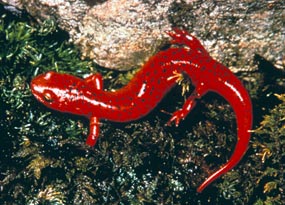As of last Friday, summer is officially here! A popular destination for many vacationers this season will be one of our National Parks, which see over 275 million visitors in a year.
Since its creation in 1916 through the signing of the Organic Act, the National Park Service (NPS) has cared for these beautiful parks in order to “conserve the scenery and the natural and historic objects and the wild life therein and to provide for the enjoyment of the same in such manner and by such means as will leave them unimpaired for the enjoyment of future generations.” Unfortunately, these beloved parks are feeling the effects of climate change and are experiencing negative impacts as diverse as the parks themselves – from melting ice at Glacier Bay to changing precipitation patterns in Death Valley. Thankfully, the NPS is working hard to manage the threat of climate change and acting to save the parks for future generations.
The NPS has enacted a comprehensive Climate Change Response Program to make the parks an active part of the solution, by studying the ways that the parks consume energy and contribute to climate change. This program is focused on developing strategies to lessen these impacts, while educating the public on climate change.
The Climate Friendly Parks Program
One element of this plan is the Climate Friendly Parks Program, a certification process that assists park staff in assessing and responding to the unique threats facing their parks. Parks participating in this program complete several steps to become certified as Climate Friendly. After applying to the program, parks perform an assessment on their greenhouse gas (GHG) emissions and collect data on their sustainability and climate change challenges that will serve as the baseline for future progress. Then, they host a workshop with local stakeholders to begin developing an Action Plan or Environmental Management System (EMS) for the park. The completed plans contain specific actions and timelines for the park to reduce GHG emissions, educate visitors and staff, and plan for climate change’s impact on the park. Finally, once this plan is approved, parks achieve certification as a Climate Friendly Park.
Great Smoky Mountains Rises To The Challenge

Great Smoky Mountains National Park (GRSM) is a Climate Friendly Park located right in SACE’s backyard. This is the nation’s most visited park, known for its scenic views and for its remarkable biodiversity. With designations such as International Biosphere Reserve and ‘Salamander Capital of the World!,’ GRSM houses an estimated 100,000 species of organisms, including iconic park residents such as black bears and synchronous fireflies. However, the most diversity is seen in the plant populations. According to the NPS, “[vegetation] is to Great Smoky Mountains National Park what granite domes and waterfalls are to Yosemite and geysers are to Yellowstone.”

GRSM’s Action Plan identifies the ways in which climate change threatens this ecosystem, through rising temperatures and altered precipitation patterns that could affect plant reproductive processes and animal migration patterns and enable invasive exotic species, all of which could force the “loss or relocation” of native organisms. These species are also threatened by the high levels of air pollution in the region, which gets trapped in the air over the mountains and is particularly harmful to plants (as well as to the health of visitors to the park and those who live nearby). As a Climate Friendly Park, GRSM is taking steps in several areas to mitigate their own contributions to climate change, choosing to focus on several areas:
- Energy Management (e.g., adding solar panels and introducing biofuels)
- Transportation (e.g., converting the park’s vehicle fleet to Alternative Fuel Vehicles and encouraging park visitors to use shuttles rather than cars)
- Waste Management (e.g., recycling and reducing water usage)
The park will track their progress in order to reduce GHG emissions from each of these three areas to specific targets by 2020. These measures will be coupled with increased outreach to visitors and staff to raise awareness of climate change and to make climate change education part of any park visit.
If you’re planning a trip to Great Smoky Mountains National Park or any of the national parks this summer, consider learning before you go about the ways climate change is affecting the park and steps the park is taking to counteract this. Awareness of these challenges may make you even more grateful for the experience you have.
